Today I’m beginning a 3-part series about becoming the Bagless SLP. As an EI therapist, I had become the Bag Lady with my insanely large bag stuffed to the brim with toys and materials to use in the homes of my clients during sessions. This series is about doing away with that bag! This post is the first part and will be followed by:
I realize that bagless therapy can be controversial in the world of EI therapy and I am by no means an expert on the topic. This series is meant to discuss my perspective and real-life stories from my choice to rid myself, and my clients, of the bag. It has been messy… and it has been incredible… and it has been the best decision for my caseload. I’m excited to share this series with you and welcome any discussion as well!
“The Bag”
When I started working in Early Intervention I began to acquire toys at an alarming rate. I was visiting children who had few, if any, appropriate toys for their age and development. They were typically being “babysat” by television and tablets a majority of their day without a second thought. So I filled up the trunk of my car with all of the goodies I could find: Books, puzzles, play food, Cariboo, kinetic sand, wind-up toys, bubbles, cars, sorters, dolls, potato heads, interactive books, and much more. I was very organized about it but there was a lot going on back there. I grabbed a few large zipper bags from IKEA and started seeing children and their families. It took only a few short sessions before I began to realize that it was “All About That Bag” (go ahead and hum Megan Trainor’s tune in your head with that). Parents knew that I provided the toys and the kids knew exactly where to find them. (Keeping 2 and 3 year olds out of those bags should be a new Olympic sport!) My clients would dive into those bags like they belonged to Mary Poppins herself! No, you aren’t going to be able to pull a lamp out of that bag, sorry! Now, I will say that some of my families had incredible toys and I did not bring in the big bag. But, I felt a little empty-handed and insecure without ANYthing, so I still stuffed one or two things into a smaller bag for those sessions… just in case. Some sessions went well and many of my clients were making progress. But…
Buy-in and Carry-over
As sessions progressed, I was seeing more and more progress from my children in homes that provided their own toys. Yes, you could definitely argue that those parents were already more likely to carry over activities and I would agree with you. However, I was seeing very little, if any, carry-over in the homes that I was bringing toys into. I found that parents were disengaged in the sessions despite my encouragement to participate. I was at a loss. What was I doing wrong and why weren’t these parents being the perfect little EI parents that I needed them to be? When I attended ASHA in November I went to several Hanen sessions. They were very well done and I brought back so many ideas to implement in therapy to increase parent participation and carry-over. I was successful in getting some parents to participate more in therapy but was still toting in toys and seeing very little carry-over or change in the clients.
The Change
I am a member of the Early Intervention SLPs group on Facebook. This is an active community of over 2,400 EI SLPs from across the world who participate in discussions, sharing, and more! The discussion of therapy materials and bagless therapy had come up a few times in the group and recently I began following a thread that was discussing this extensively. Many SLPs were providing information and testimonials about their bagless therapy. As I began to look into the research and resources that they were providing on the topic, I began to think about my own service provision. Was it best practice to bring in bags of toys that my clients would only have access to for 1 out of 168 hours a week? What I learned from my research is that there is evidence to support that when developmental interventions are embedded in children’s regular routines and activities, skills learned are functional and meaningful for children and their caregivers (Kashinath, Woods, & Goldstein, 2006). Is my awesome Melissa & Doug puzzle a regular routine or activity for a child? Do they have access to it after I leave? If not, will the parents understand how to target similar goals with what they do have at home? What if, instead of playing with my toys, I show a parent how to work on language during meals and snacks? Instead of 1 hour of therapy, they will most likely receive 20+ hours of intervention in the carry-over of that strategy during the rest of the week. I don’t know about you… but this made such incredible sense to me!
So, I made a decision… To empty the trunk:
(I kept a few things in there that I’ll discuss in a future part of this series.)
What do parents think about no toy bag? Here is a great video from FGRBI:
So… after clearing out the trunk and leaving the bag behind, how is it going? Check out Part 2! If you just can’t wait, check out the links/information at the bottom of this post!
Haven’t had enough? Here are more resources and readings on this topic:
Using Routines-Based Interventions in Early Childhood Special Education
Florida State University Family Guided Routines Based Interventions Website
Early Intervention in Natural Environments: A Five-Component Model
Post References:
Kashinath, S., Woods, J.W., & Goldstein, H. (2006). Enhancing generalized teaching strategy use in daily routines by parents of children with autism. Journal of Speech, Language, and Hearing Research, 49, 466-485.
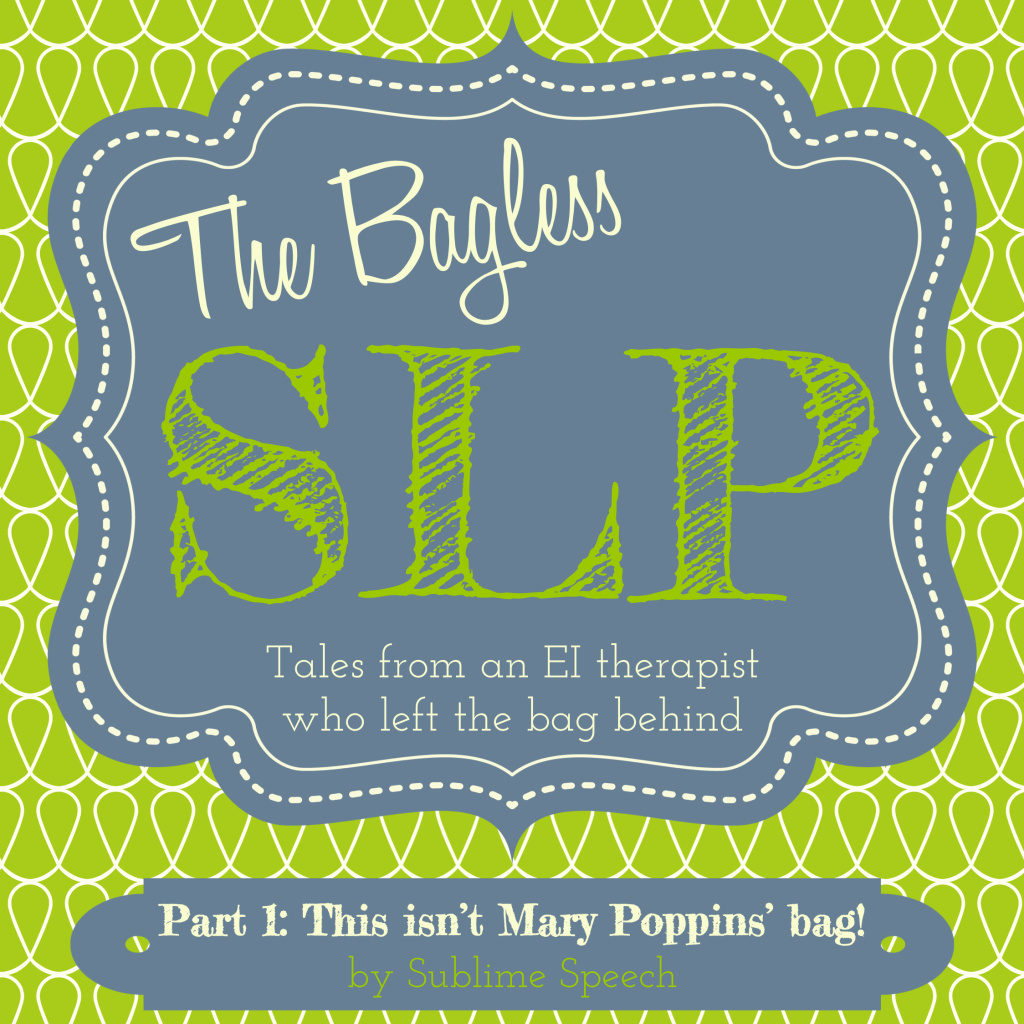
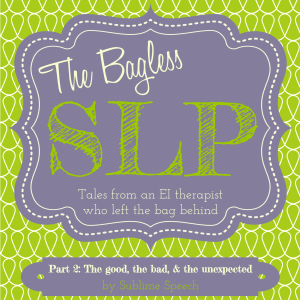
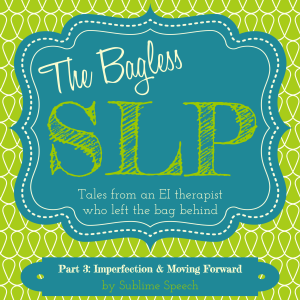
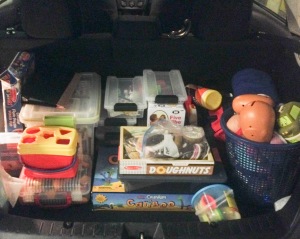
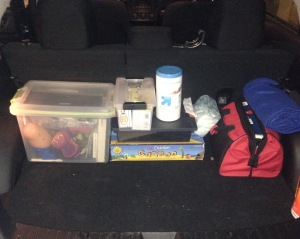

Thank you for sharing! I feel very similar in this thought. Currently I am servicing EC students and have a whole office of materials I rarely use. I find therapy much more successful when I’m in the classroom using toys and materials available all the time to the students. It also allows the teachers and assistants to get involved. This is great information…can’t wait for the next parts.
Nice post! I service B-3 in homes and 3-5 in preschools. When I began, I was told I was not allowed to bring toys into my clients home.. Aka no toy bag. Even though many of my families did not of many toys, books, or anything age appropriate to use. We were told that if we brought materials in and then removed them from the environment, there was no chance of carryover. Instead, I was encouraged to find them free monthly resources or consult with the service coordinators in order to get them some books and toys. Not having a toy bag is often difficult, but providing therapy that can actually be carried over throughout the week is the goal. Even if it the therapy envolvs labeling objects in the clients natural environment or using a door to teach simple concepts. 🙂
Wow! That’s really interesting! I would have thought that the kids would be more engaged with something new to them, but what you said about the parents makes a whole lot of sense.
I love that you are challenging yourself to think outside the bag. I also am trying to focus less on the “stuff” of therapy and more on the communication and materials that are already present.